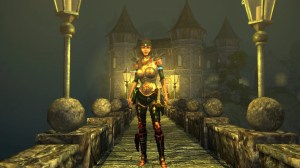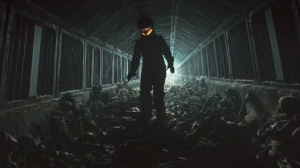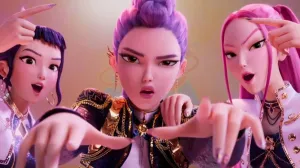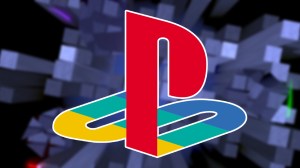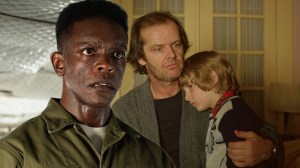This week is bringing about the end of a television era, when The Flash airs its final episode on The CW. The ninth and final season of the series is being regarded as the final chapter (for the foreseeable future) of the Arrowverse, a superhero franchise that has entertained The CW viewers for over the past decade. While there’s no telling exactly how the events of The Flash‘s finale will shake out, or if another Arrowverse offshoot could eventually become a reality at a later date, this series finale is providing a time to look back at the highs and lows of the franchise. Amid all of that, one thing is certain — the Arrowverse had a major impact on the way superhero stories have been told in live-action.
Videos by ComicBook.com
Back in 2013, when it was announced that the sophomore season of Arrow would include a backdoor pilot for a potential The Flash television show, it was far from the first attempt for The CW to spin off a DC show. The decade-long tenure of Smallville, alone, was dotted with multiple failed attempts — first through the short-lived Birds of Prey show being confirmed (and retconned) into being in the same universe, and later efforts with the Aquaman-centric Mercy Reef, a possible Justice League spinoff, and a Metropolis series led by Green Arrow and Lois Lane. While none of these shows worked, something about The Flash did, as it created a snappier, science-driven sister show to Arrow‘s brooding established success. It didn’t require any preconceived knowledge of any canon, as Marvel’s Agents of S.H.I.E.L.D. spinoff did at the time. The Flash also didn’t feel bogged down by the darkness of the recently wrapped Dark Knight trilogy or the then-blossoming “Snyderverse” of DC films — on the contrary, it worked so well that some spent years arguing that it should be the foundation for the franchise’s big screen lore.
Either way, the 2014 premiere episode of The Flash was the most-watched pilot on The CW in five years, and the Arrowverse was born. In the years that followed, the Arrowverse grew exponentially, rescuing Constantine, Supergirl and Black Lightning from their previously-standalone stories, greenlighting a Batwoman show and several animated spinoffs, and spinning some of the franchise’s most popular side characters into Legends of Tomorrow. Each of these shows not only added their own tonal flavor to the melting pot of the Arrowverse, but they helped normalize some major “firsts” in the modern live-action superhero world long before the MCU, DCEU, or another superhero franchise. While the execution wasn’t always perfect, it can not be overstated how significant it was to have the Arrowverse reflect a larger swath of the real world week after week. Over the years, the various shows boasted a number of non-white heroes, female heroes (including Supergirl, which arrived at a time where people were still making “chick flick” jokes about the prospect of a female-led superhero solo project), and LGBTQ+ heroes.
Along the way, the Arrowverse was able to endear its audience to these characters, many of whom were B-listers or below in the pages of the comics. If it wasn’t for the presence of the Arrowverse (and the pop culture impact it had beyond those who watched it), characters like Black Canary, Deathstroke, Martian Manhunter, Batwoman, and even Arrow‘s titular Green Arrow might not be so easily recognized among the mainstream. (Just look at the roster of playable characters in 2017’s Injustice 2 video game, which feel like a charming time capsule for the Arrowverse’s impact at that time.) Dreamer, a revamp of the obscure Legion of Super-Heroes member Dream Girl created specifically for Supergirl, is a whole fascinating case study of her own who is now thriving in comics and other multimedia as one of the premiere trans superheroes. It helped that the Arrowverse’s portrayal, even at its most misguided or contrived, usually prioritized its characters. Although the shows often took liberties with DC’s source material, and even as the story beats of a particular episode might have been incredibly easy to forecast, the appeal became seeing how it impacted the heroes and villains. To this day, other superhero media is still trying to crack that nut of how to endear audiences to its newest and weirdest characters, to various successes. (Hell, Legends feels like a precursor to the MCU’s current approach of giving incredibly-obscure characters the solo spotlight.)
As the Arrowverse continued to grow, and its various titular characters navigated their own journeys, it created a unique experience for viewers — you could watch as many or as few of the shows as you wanted and still be (largely) satisfied. But at the same time, the Arrowverse illustrated the undeniable strength of superheroes existing in a shared universe and joining forces through its various crossovers. Each year, the late fall and early winter would be marked by some sort of multi-episode event between the shows, with countless instances of characters popping up in either show if an episode’s story required it. While DC’s superheroes had been crossing over in comics for decades at that point, and Marvel’s The Avengers had shown what that kind of alliance could look like on the big screen, the Arrowverse crossovers brought something distinct. Whether through Green Arrow and The Flash fighting two rogues in the first crossover, or the literal adaptation of Crisis on Infinite Earths that was the franchise’s last true crossover, these stories captured the beauty of a comic event miniseries in the package of a TV procedural. These story arcs saw characters die, get married, learn of their long-lost children, and everything in between — something that was frustrating if you tried to consume certain shows in a linear order, but was still ambitious nonetheless. With countless bizarre cameos, wild Easter eggs, and impressive fight scenes, events like Invasion!, Elseworlds, or Crisis became must-see television for superhero fans, and proved the might of the DC Universe at a time when it desperately needed it.
In the time since the Arrowverse first became a reality, the realm of superhero adaptations has evolved dramatically. The MCU and other Marvel-related offshoots are still chugging along in their own ways, indie superhero franchises like The Boys have gotten their own mainstream adaptations, and even the DC Universe is gearing up for a “reset” from DC Studios’ James Gunn and Peter Safran. While a perfect storm of elements have gotten us to that point, it’s hard to deny that the Arrowverse has been an imperfect, but pivotal part of that. As The Flash comes to a close, and seemingly closes the book on the entire franchise, here’s hoping its impact continues to be felt in the years to come.

